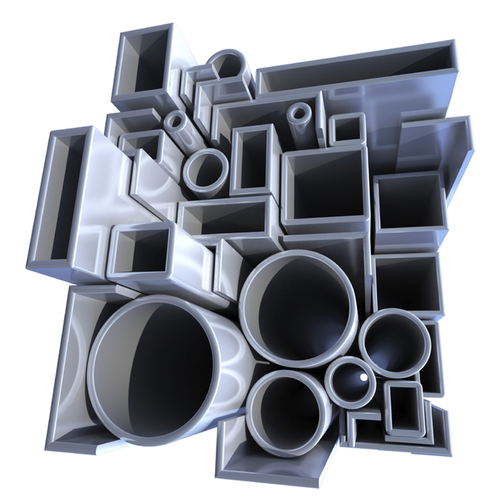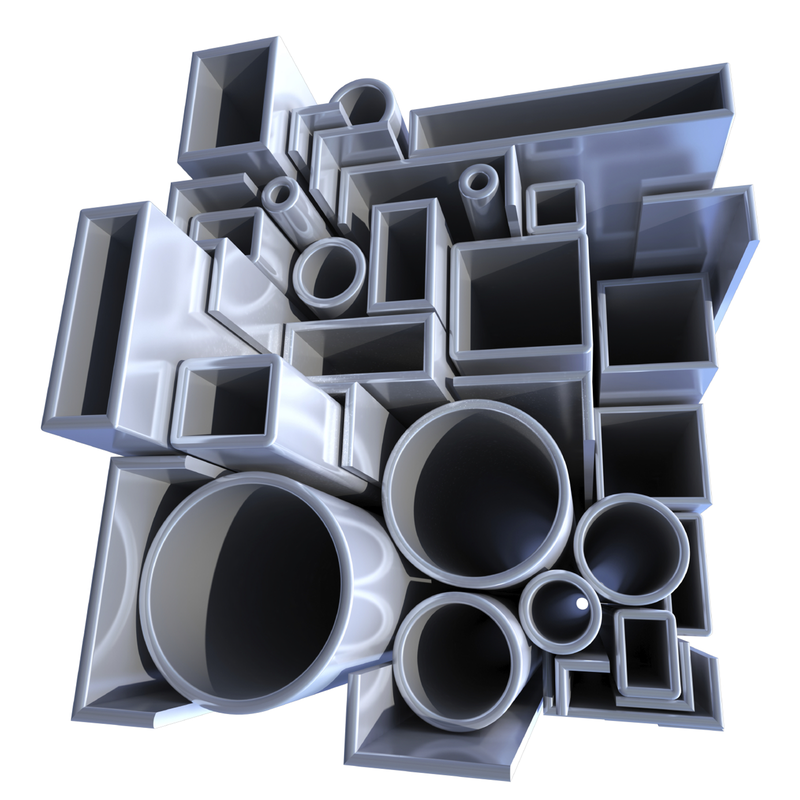The Difference Between Round and Square Pipes
New calculations of the spreading of particles being carried down a pipe by a fluid show that the effect of the pipe shape—round versus rectangular—is more dramatic than researchers previously thought. The particles spread out asymmetrically in a rectangular pipe, whereas they form a symmetric distribution in both circular and elliptical pipes. Surprisingly, the cross section that reproduces the symmetrical behavior of a circular pipe is not a square but a rectangle with approximately a 2 to 1 width-to-height ratio. The researchers are unable to provide a simple physical explanation, but they believe the results may help in optimizing conduit shapes for drug delivery or for chemical reaction vessels.
Researchers have long studied the flow of particles in fluids [1], such as the spread of pollutants in a river or the dispersal of drug molecules in the blood stream. It is well known that the fluid often speeds up the spreading process compared with pure diffusion. For example, smoke from a cigarette fills a room in seconds, but if there were no air currents, the diffusion would take days.
Experimentalists often study these processes by injecting a blob of dye into a flow and observing how it spreads over time. Compared to the average flow speed, some dye particles will move faster, whereas others will lag behind. Researchers have determined the distribution of dye for the two simplest cases—a circular pipe and a wide, flat channel—and found that the spread along the flow direction (upstream-downstream) is symmetrical for the circular pipe but not for the channel. However, no one has systematically considered other shapes, such as elliptical pipes and rectangular pipes (called "ducts") with a range of width-to-height ratios.
Now researchers from the University of North Carolina, Chapel Hill, led by Roberto Camassa and Richard McLaughlin, have derived equations and run computer simulations to study the distribution of dye for a variety of pipe shapes. They found that the distinctions are more dramatic than expected.
In their calculations, the team imagined that dye is injected as a thin, cross-sectional sheet at a single location within the duct or pipe. The dye particles are dragged along by the fluid but at different speeds depending on their positions. The flow is faster in the middle than near the walls, so the sheet of dye stretches out, or bows, in the middle. One of the statistical parameters the researchers calculated was the skewness, which is a measure of asymmetry along the upstream/downstream direction. Zero skewness means a symmetric distribution (like a perfect bell curve), whereas negative skewness describes a lopsided distribution with a long tail in the upstream direction. Positive skewness means the long tail is downstream.
For circular and elliptical pipes, the skewness was zero during the early and intermediate stages of the flow, which were the focus of this study. The situation was more complicated for ducts. Skinny ducts had negative skewness, whereas fat, nearly square ducts had positive skewness. Strangely, the duct with zero skewness—the one most like a circular pipe—was not square but rectangular, with a width-to-height ratio of approximately 1.87. The team plans to run experiments to check this result, but their finding that particles in a rectangular duct spread more symmetrically than those in a square one has left them "baffled," Camassa says. Another puzzle was that very skinny elliptical ducts had zero skewness, but similarly-elongated rectangular ducts had negative skewness.
Knowing the skewness could be important in certain situations, McLaughlin says. When delivering a drug through a tube, for example, one may want it to arrive like a sharp hammer (negative skewness) or have it gradually build up (positive skewness). These asymmetries may also describe the experience of a bacterium as it swims toward the highest nutrient concentration.
This work confirms previous speculations on the importance of duct geometry, says Colm Caulfield from Cambridge University in the UK. He thinks the calculations could help optimize the inlets to chemical reaction systems where two or more reactants are mixed together. “Clear prediction of the time-dependent evolution of [the skewness and other distribution parameters] is potentially very important to ensure complete reaction of two different species,” Caulfield says.
This research is published in Physical Review Letters
–Michael Schirber
Michael Schirber is a Corresponding Editor for Physics Magazine based in Lyon, France.
References
- G. Taylor, “Dispersion of Soluble Matter in Solvent Flowing Slowly through a Tube,” Proc. R. Soc. London A 219, 186 (1953).
More Information
Short description of dispersion experiments from the National Autonomous University of Mexico





